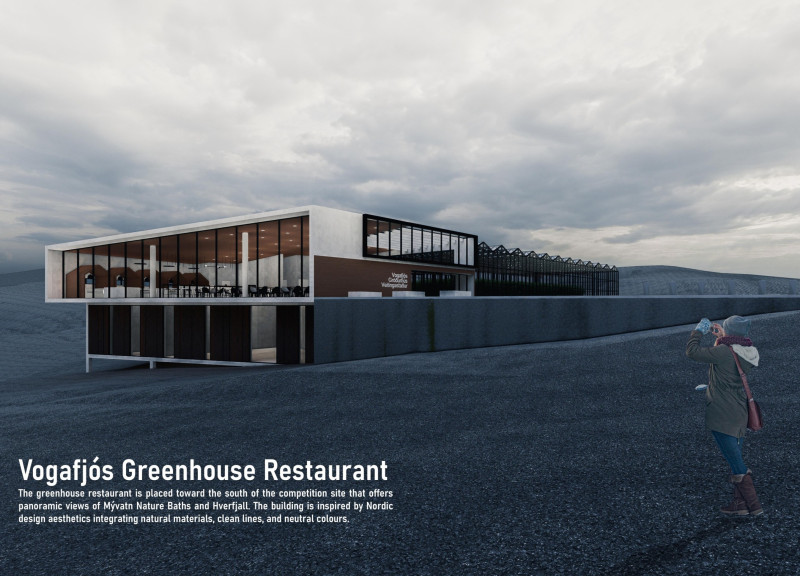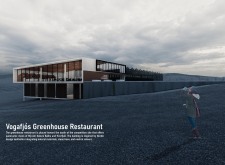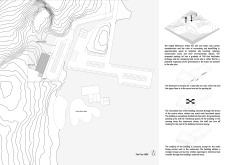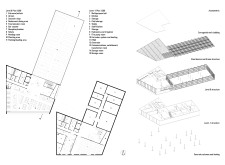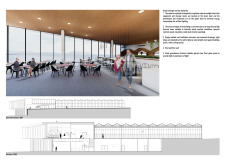5 key facts about this project
Functionally, the Vogáfjós Greenhouse Restaurant serves as both a dining venue and a functional greenhouse, emphasizing a farm-to-table concept that is increasingly relevant in today’s culinary landscape. The structure is arranged over two levels, with the ground level housing the dining area and greenhouse, while the lower level accommodates the kitchen, storage, and operational facilities. This organization ensures that the restaurant is not only inviting for guests but also efficient and practical for staff.
One of the hallmark features of the project is its extensive use of glass, which facilitates a transparent façade that blurs the boundaries between the interior and the exterior. This design choice allows for ample natural light to penetrate the dining space, creating an inviting atmosphere for patrons while also providing stunning views of the surrounding natural beauty. The south-facing orientation is particularly insightful, maximizing sunlight exposure, which is crucial in a region known for its variable weather conditions.
Material selection plays a significant role in the overall architecture of the Vogáfjós Greenhouse Restaurant. The primary materials include concrete for the structural foundation, wooden accents for warmth, and steel elements that contribute to the structural integrity of the design. Large glass panels and double-glazed windows enhance thermal efficiency and comfort within the restaurant, reinforcing a commitment to sustainability while ensuring an optimal dining experience. The use of corrugated cladding for roofing is both practical and aesthetically pleasing, facilitating water drainage efficiently while maintaining a modern profile.
The unique aspects of this project extend to its environmental considerations. The design incorporates passive heating and cooling strategies, leveraging Iceland's natural climate to reduce energy consumption. The greenhouse element not only serves as a growing space for fresh produce but also contributes to the sustainability narrative that is increasingly woven into modern architectural practices. Rainwater and snowmelt management systems are strategically employed, showcasing an understanding of the local climate’s challenges and opportunities.
Circulation within the restaurant is carefully planned to create a seamless flow between spaces. The central atrium serves as the circulatory core, allowing for intuitive movement and interaction among guests and staff. The spatial arrangement effectively enhances user experience, providing versatile settings for both individual diners and larger gatherings.
The Vogáfjós Greenhouse Restaurant is not merely about functionality; it represents a deeper commitment to integrating modern architectural ideas with environmental consciousness. The design reflects a thoughtful approach to blending indoor and outdoor spaces, facilitating a unique dining experience that highlights the culinary richness of the region. By promoting local ingredients sourced from the greenhouse, the restaurant fosters a connection to the land, enriching the guests' experience by engaging them with the surrounding ecosystem.
For those interested in exploring this architectural endeavor further, reviewing the architectural plans, architectural sections, architectural designs, and architectural ideas will provide a deeper understanding of the intricacies and thoughtful considerations that define the Vogáfjós Greenhouse Restaurant. This project exemplifies how contemporary architecture can thoughtfully engage with its environment while maintaining functional integrity and aesthetic appeal, making it a noteworthy example of modern design principles.


